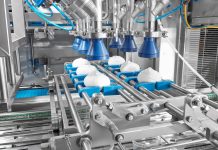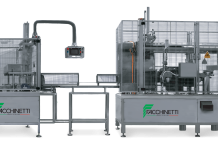At present there are 46 dairy GIs but value creation is highly concentrated as 89% of total turnover is represented by five PDO cheeses.
The Italian agri-food system has the highest number of food products with Geographic Indication (PDO/PGI/TSG) recognitions, with 248 out of the 1124 across all food sectors in the EU. A closer look at the economic importance of GIs in Italy indicates a strong concentration in terms of value creation: 94% of total turnover is generated by the first 20 PDO/PGI products. Total value at production accounts to 6.5 billion € (11.8 at consumption). The highest economic importance is linked to denominations in the dairy sector, which represent 57.5 % of the total GI value.
Data and numbers
 Italy may be defined as a cheese country: 74% of the total milk produced goes to cheese processing but 46% of it goes to traditional GI cheeses. Also 79% of ewe’s and 78% of buffalo’s milk goes to specific PDO cheeses such as Pecorino Romano and Mozzarella di Bufala Campana. At present there are 46 dairy GIs: 43 PDO cheeses, 2 PDO Ricotta, 1 PGI cheese. Value creation is highly concentrated as 89% of total turnover is represented by five PDOs (Parmigiano Reggiano, Grana Padano, Gorgonzola, Mozzarella di Bufala Campana, and Pecorino Romano), while the others range in size from 9% down to 0.001% of total GI cheese turnover. However, Grana Padano and Parmigiano Reggiano alone represent 73% of the total turnover. Only milk obtained in defined production areas may be used to make GIs, following the product specifications, with the two factors of tradition and origin. The total production of GI cheeses is around 489,000 tons obtained in 1,700 dairy plants. Out of these, 125,000 tons are exported. About 30% of the total production of Grana Padano, Parmigiano Reggiano and Gorgonzola is exported. The total value of dairy GIs at origin amounts to 3.8 billion € (+ 10.1% in 2011) and 4.4 billion € at consumption. Almost all GI cheeses show an upward trend with an increasingly positive image both in the domestic and in the export market. Therefore it is crucial for the Italian dairy industry to maintain, develop and protect the system. GIs represent an essential tool for the Italian dairy industry to be competitive on the market. Compared to the most relevant EU milking countries, Italy is characterized by two aspects: an insufficient (cow) milk production with a relevant import of milk and dairy products; and a dispersed production structure. With the French group Lactalis taking control of Parmalat, Italy is not present any more in the world dairy market with a global player. In this context, Italian industry has a strategic interest in the production of traditional PDO cheeses and it is not surprising if there is a common position among the different actors in the production chain to promote and defend GIs. While an important part of the fluid milk, especially UHT, is imported, most of the domestically produced milk goes either to pasteurized milk consumption or to GI cheeses. Therefore both in terms of number of protected products – Italy has the second number of dairy GIs after France – and especially in quantity, the figures are the most relevant in the European quality policy sector. This rich and heterogeneous patrimony is shared by several actors with specific organizations in a collective system through common bodies named Consorzi di tutela, capable of defending the product’s reputation and of maintaining its quality. The Consorzio is the producer’s group, a voluntary association of the producers representing at least ¾ of the total PDO quantity, which oversees legal protection, product specification and product advertising and promotion. It is approved by the Ministry of Agriculture. The certification system is carried on by independent organizations responsible for auditing the adherence to the PDO’s code of practices. The control organizations are accredited by the national body Accredia. The system is financed directly by the producers.
Italy may be defined as a cheese country: 74% of the total milk produced goes to cheese processing but 46% of it goes to traditional GI cheeses. Also 79% of ewe’s and 78% of buffalo’s milk goes to specific PDO cheeses such as Pecorino Romano and Mozzarella di Bufala Campana. At present there are 46 dairy GIs: 43 PDO cheeses, 2 PDO Ricotta, 1 PGI cheese. Value creation is highly concentrated as 89% of total turnover is represented by five PDOs (Parmigiano Reggiano, Grana Padano, Gorgonzola, Mozzarella di Bufala Campana, and Pecorino Romano), while the others range in size from 9% down to 0.001% of total GI cheese turnover. However, Grana Padano and Parmigiano Reggiano alone represent 73% of the total turnover. Only milk obtained in defined production areas may be used to make GIs, following the product specifications, with the two factors of tradition and origin. The total production of GI cheeses is around 489,000 tons obtained in 1,700 dairy plants. Out of these, 125,000 tons are exported. About 30% of the total production of Grana Padano, Parmigiano Reggiano and Gorgonzola is exported. The total value of dairy GIs at origin amounts to 3.8 billion € (+ 10.1% in 2011) and 4.4 billion € at consumption. Almost all GI cheeses show an upward trend with an increasingly positive image both in the domestic and in the export market. Therefore it is crucial for the Italian dairy industry to maintain, develop and protect the system. GIs represent an essential tool for the Italian dairy industry to be competitive on the market. Compared to the most relevant EU milking countries, Italy is characterized by two aspects: an insufficient (cow) milk production with a relevant import of milk and dairy products; and a dispersed production structure. With the French group Lactalis taking control of Parmalat, Italy is not present any more in the world dairy market with a global player. In this context, Italian industry has a strategic interest in the production of traditional PDO cheeses and it is not surprising if there is a common position among the different actors in the production chain to promote and defend GIs. While an important part of the fluid milk, especially UHT, is imported, most of the domestically produced milk goes either to pasteurized milk consumption or to GI cheeses. Therefore both in terms of number of protected products – Italy has the second number of dairy GIs after France – and especially in quantity, the figures are the most relevant in the European quality policy sector. This rich and heterogeneous patrimony is shared by several actors with specific organizations in a collective system through common bodies named Consorzi di tutela, capable of defending the product’s reputation and of maintaining its quality. The Consorzio is the producer’s group, a voluntary association of the producers representing at least ¾ of the total PDO quantity, which oversees legal protection, product specification and product advertising and promotion. It is approved by the Ministry of Agriculture. The certification system is carried on by independent organizations responsible for auditing the adherence to the PDO’s code of practices. The control organizations are accredited by the national body Accredia. The system is financed directly by the producers.
In the future
This original but vital system for the competitiveness of Italian dairy industry however, has to face the challenge of globalization. The typical producing factors and technology together with the relevant number of small scale dairy plants seem not respond to the present trends of merging, acquisitions and large investments which characterize dairy companies. Probably, the strategy to maintain the competiveness of these traditional products should be based in the perpetuation and development of their typical factors with an appropriate organization which should include all the actors of the producing chain and the research.
by Leo Bertozzi




